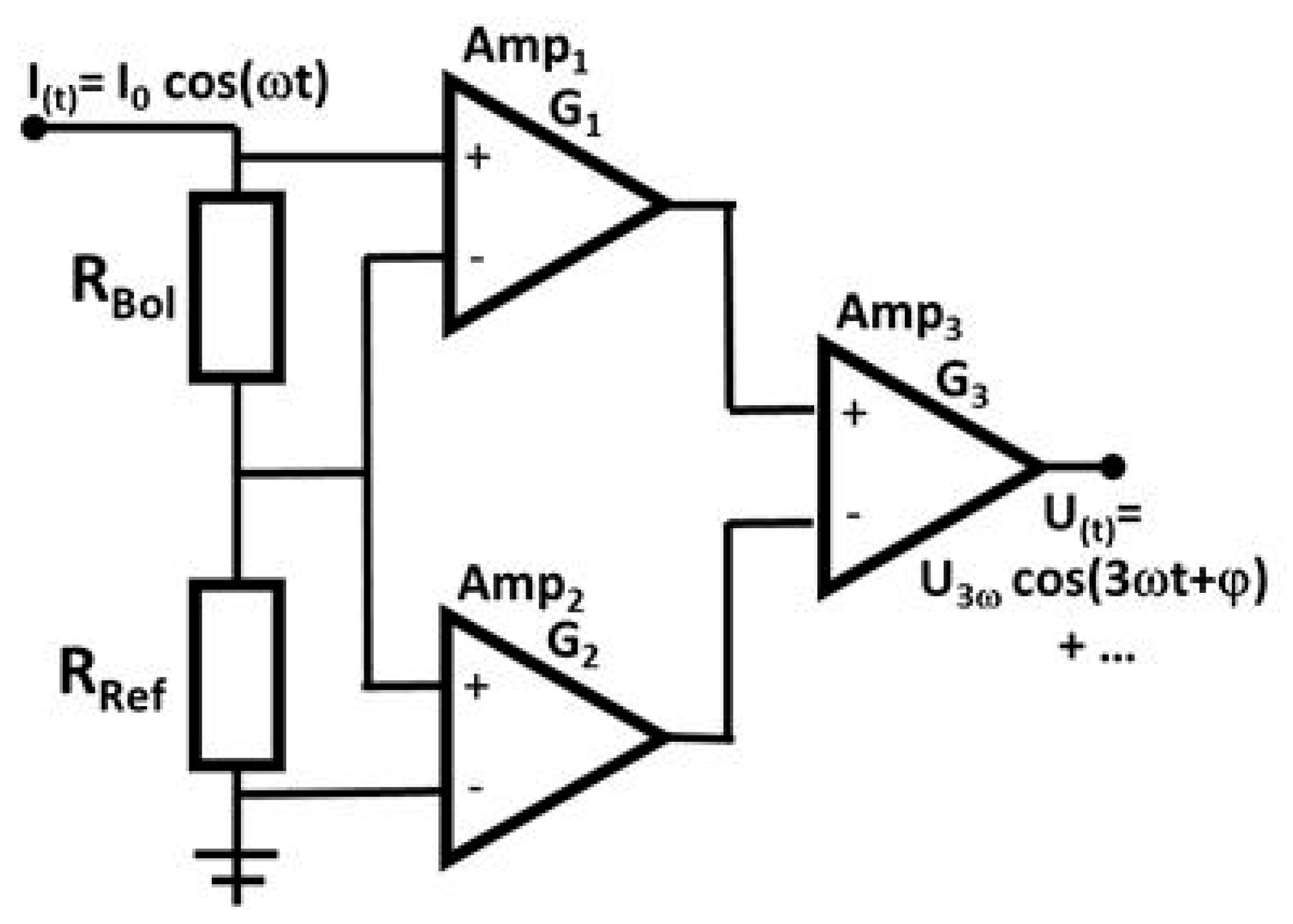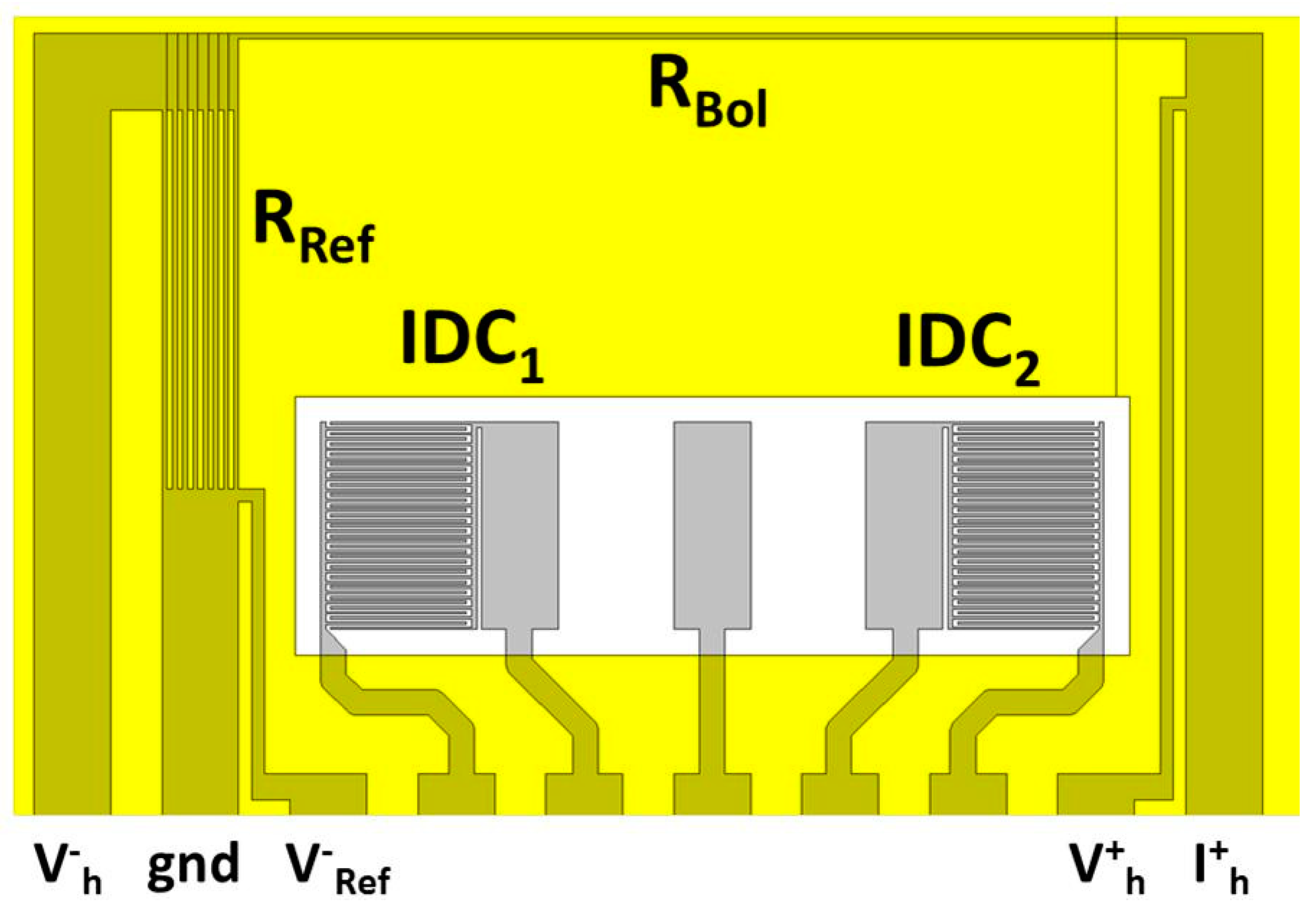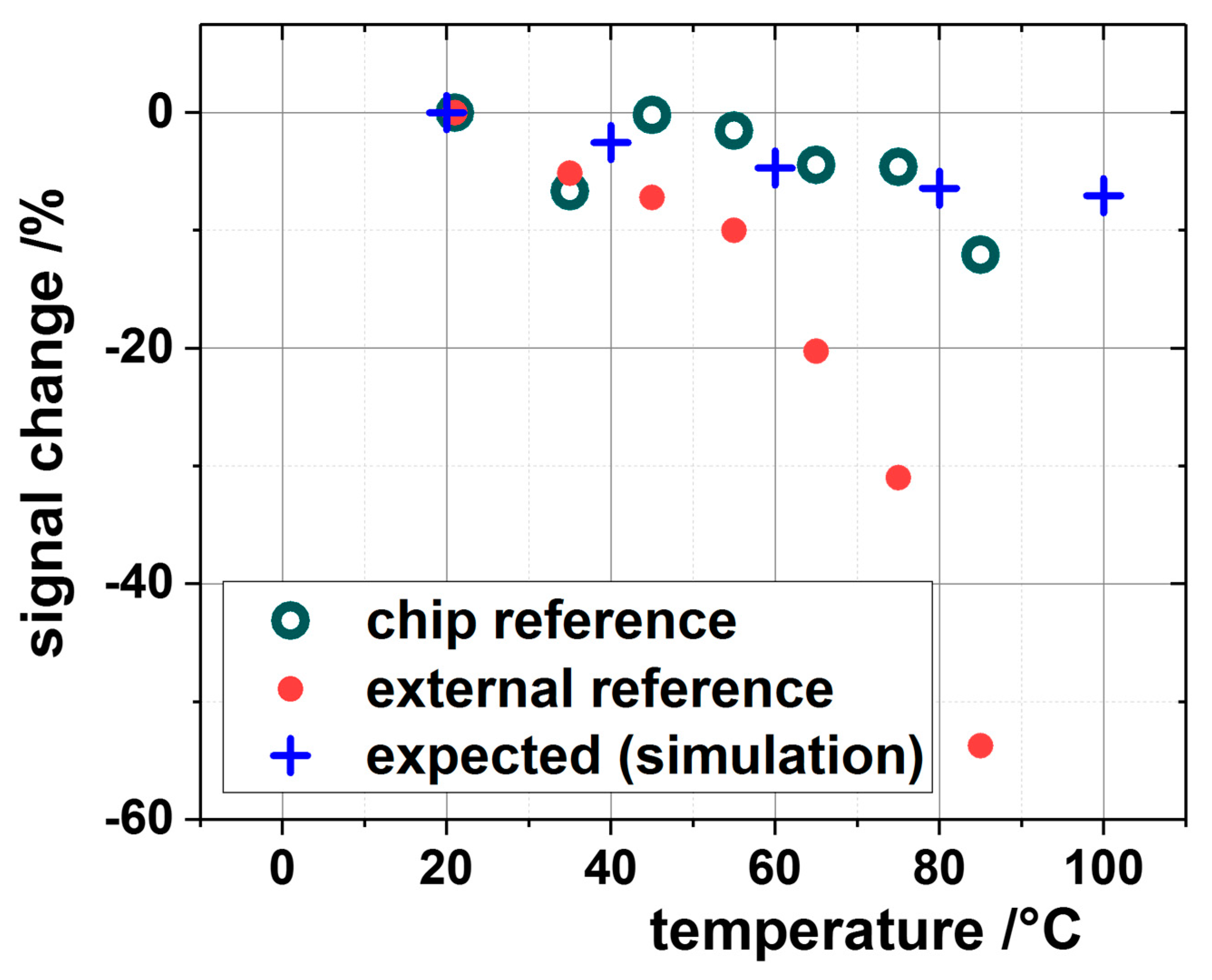On-Chip Temperature Compensation for Thermal Impedance Sensors †
Abstract
:1. Introduction
2. Experimental
3. Results
Author Contributions
Acknowledgments
Conflicts of Interest
References
- Jägle, M.; Pernau, H.-F.; Pfützner, M.; Benkendorf, M.; Li, X.; Bartel, M.; Herm, O.; Drost, S.; Rutsch, D.; Jacquot, A.; et al. Thermal-electrical impedance spectroscopy for fluid characterization. Procedia Eng. 2016, 168, 770–773. [Google Scholar] [CrossRef]
- Cahill, D.G. Thermal conductivity measurement from 30 K to 750 K: The 3-omega method. Rev. Sci. Instrum. 1990, 61, 802–808. [Google Scholar] [CrossRef]



Publisher’s Note: MDPI stays neutral with regard to jurisdictional claims in published maps and institutional affiliations. |
© 2018 by the authors. Licensee MDPI, Basel, Switzerland. This article is an open access article distributed under the terms and conditions of the Creative Commons Attribution (CC BY) license (https://creativecommons.org/licenses/by/4.0/).
Share and Cite
Jaegle, M.; Pernau, H.-F.; Pfützner, M.; Benkendorf, M.; Li, X.; Bartel, M.; Drost, S.; Wöllenstein, J. On-Chip Temperature Compensation for Thermal Impedance Sensors. Proceedings 2018, 2, 1053. https://doi.org/10.3390/proceedings2131053
Jaegle M, Pernau H-F, Pfützner M, Benkendorf M, Li X, Bartel M, Drost S, Wöllenstein J. On-Chip Temperature Compensation for Thermal Impedance Sensors. Proceedings. 2018; 2(13):1053. https://doi.org/10.3390/proceedings2131053
Chicago/Turabian StyleJaegle, Martin, Hans-Fridtjof Pernau, Marcus Pfützner, Mike Benkendorf, Xinke Li, Markus Bartel, Susanne Drost, and Jürgen Wöllenstein. 2018. "On-Chip Temperature Compensation for Thermal Impedance Sensors" Proceedings 2, no. 13: 1053. https://doi.org/10.3390/proceedings2131053
APA StyleJaegle, M., Pernau, H.-F., Pfützner, M., Benkendorf, M., Li, X., Bartel, M., Drost, S., & Wöllenstein, J. (2018). On-Chip Temperature Compensation for Thermal Impedance Sensors. Proceedings, 2(13), 1053. https://doi.org/10.3390/proceedings2131053




